Part 1:
http://deterritorialinvestigations.wordpress.com/2013/07/24/from-socialism-to-neoliberalism-a-story-of-capture-part-1-of-2/
From Socialism to Neoliberalism: A Story of Capture (Part 1 of 2)
[The following comes from a text I had worked on several years ago. For a variety of reasons, the project never came to fruition, but I've been revisiting my notes from this period in preparation for my current work. Note: as a portion of an unpolished and unfinished work, elements of this narrative may seem out of place or missing. I put this up, however, because it is always worthwhile to keep an eye trained on the past when pushing forward into the future.]“The essence of the democratic surge of the 1960s was a general challenge to existing systems of authority, public and private. In one form or another, this challenge manifested itself in the family, the university, business, public and private associations, politics, the governmental bureaucracy, and the military services… [This influx of democratic consciousness can be attributed in part to an awareness in] social issues, such as use of drugs, civil liberties, and the role of women; racial issues, involving integration, busing, government aid to minority groups, and urban riots; military issues, involving primarily, of course, the war in Vietnam but also the draft, military spending, military aid programs, and the role of the military-industrial complex more generally.”
-Samuel P. Huntington The Crisis of Democracy: Report on the Governability of Democracies to the Trilateral Commission
The criticisms Huntington was retrospectively firing towards
practitioners of democracy were not aimed at the socialists that were
congregating around the AFL-CIO, but at the far more anarchic and
oppositional young movements that were personified in the Students for a
Democratic Society (SDS). The pivotal fracture between these two wings
of the left had occurred with the signing of the Port Huron Statement.
This paradigm shift was the event that severed the ‘old guard’ of social
democrats from the new generation, marking the tone in which the
cultural would operate with throughout the 1960s. Two intellectuals that
bear the primary responsibility for the radicalized politics of the New
Left – C. Wright Mills, the American sociologist and author of The Power Elite;
and Herbert Marcuse, a veteran of the Frankfurt School of critical
theory, where he can developed his own brand of revolutionary politics
through a distinctive blending of Marxism, Freudianism, and rugged sense
of individuality (a cocktail that had offended orthodox Marxists). Both
men had come to be seen as threats to the Establishment; when the
revolts of 1968 erupted in Paris, protestors carried massive banners in
the streets bearings the names “Marx, Mao, Marcuse!” in red ink. Mills,
on the other hand, had been denied funding for future research by the
Ford Foundation after he had published The Power Elite in 1956.i Perhaps ironically, Marcuse’s most famous and influential work, One Dimensional Man: Studies in the Ideology of Advanced Industrial Society, had been completed with monetary aid from the Rockefeller Foundation and the Social Sciences Research Council.iiTom Hayden, the primary author of the Port Huron Statement , had been infatuated with the writings of Mills, and the condemnations contained in the statement drew directly from The Power Elite. Earlier Hayden had completed his master’s thesis by drawing heavily on Mills’ work. The elderly sociologist had passed away just months before the debut of the Port Huron Statement, but Marcuse had a front-row seat to what had seemed, at least for a moment, like the beginning of a world revolution. One Dimensional Man would later become the manifesto of the SDS, with the young activists attracted to Marcuse’s emancipatory ethos – primarily of his attack on institutionalized governance and other power structures. He lobbed criticisms at Big Labor, which he saw as a something that had co-opted revolutionary potential as its ‘white-collar’ membership increased.iii This had offended the segments of the Old Left that were rallying around the AFL-CIO, but it struck a chord with the SDS, who were abandoning representative democracy for a far more theoretical participatory framework. This, too, was indebted to Marcuse and One Dimensional Man: “free election of masters does not abolish the masters or the slaves,” he had written.
The popularity of One Dimensional Man was immense, with some 100,000 copies sold in the immediate years after its publication.iv Having been translated into sixteen languages, it was soon being used as the “official text” of SDS training sessions and before long the philosopher was travelling the globe, abandoning the dreary confines of scholarly institutions, and addressing students and activists from New York City to Rome in auditoriums and bars.v
The influence of these icons on Hayden and his comrades greatly disheartened Aryeh Neier, a young director in the League for the Industrial Democracy who had formed the SDS as its youth wing in 1959.vi Neier had been the one to initially bring Hayden into the organization, but he, along with Michael Harrington, was rapidly growing dismayed at both the hard left bent of the student activists and the rightist slant of its senior membership:
I was unenthusiastic about the 1962 “Port Huron statement” drafted by Hayden… the language about “participatory democracy” seemed like a justification for demagogy… We [the LID] wanted to hold onto SDS because its work on college campuses was making headway and had become the organization’s raison d’etre. SDS probably wished to preserve ties to the parent group because that is where the money came from. After a time, however, it became plain to both sides that the relationship between the LID and SDS had to be severed. Though I disapproved of SDS’s leftism, I was also unhappy about the LID’s rightward drift…vii
This move to the right had been triggered by one of the primary socialist intellectuals of the American dissident underground, a prolific left-wing journalism and immigrant from the Soviet-occupied Poland named Max Shachtman. At a time when the liberal establishment had made significant inroads into the left under the veil of progressivism, Shachtman’s ideology appealed and made sense to a great many who founding the increasingly dictatorial nature of the Soviet Union to be a threat equal of greater to that of capitalist exploitation. Shachtman bore the credentials of a maverick – he had been expelled from the Communist Party in 1928 for his allegiance to Stalin’s main rival, Leon Trotsky, and in 1928 had formed the Trotskyite Communist League of America. In 1934 the party was reformed as the Worker’s party, and in 1958 it was merged into the much larger and more powerful Socialist Party of America (SPA), which at the time was aligning itself closely with the LID, the AFL-CIO, and the burgeoning civil rights movement.
Over the years Shachtman’s ideology had evolved from rigid Trotskyism to anti-Soviet activism; his myriad of socialist organizations repeatedly splintered and fragmented as he denied the popular theory amongst the Left that the USSR was a “degenerated worker’s state.” Instead, he argued, it was a machine of imperialism that obstructed the “permanent revolution.” Shachtman had begun to see the United States as a force that, that despite the contradiction that the nation’s commitment to capitalism was contrary to their otherwise socialist goals, could be used for good in countering the threat of the Soviet Union:
In the first place, the division in the capitalist camp is, to all practical intents, at an end. In any case, there is nothing like the division that existed from 1939 onward and which gave Stalinist Russia such tremendous room for maneuvering. In spite of all the differences that still exist among them, the capitalist world under American imperialist leadership and drive is developing an increasingly solid front against Russian imperialism.viii
As the decade wore on, Shachtman would increasingly push himself and the milieu coalescing around him closer and closer to the Cold War politics of the Establishment. By 1961 Shachtman was endorsing the CIA’s failed Bay of Pigs invasion in Cuba, and in 1965 he was speaking out against troop de-escalation in South Vietnam.ix In 1972 his transformation was complete – attacking presidential hopeful George McGovern’s peace-oriented foreign policy a “monstrosity,” Shachtman announced his support behind the hawkish ‘Senator from Boeing,’ Henry “Scoop” Jackson.x The transformation would have long-lasting implications for American politics; many scholars have identified the collision of leftism and Senator Jackson as the birthing moment of the neoconservative ideology. The irony was that the radicals who followed Shachtman to the doorsteps of militant bureaucracy were, in fact, a great number of central players in the successes of the Civil Rights movement.
By the mid-1960s, the larger questions that were plaguing the left and casting doubts on its very nature were also being reflected in the Civil Rights movement, creating similar schisms between various factions. Just as the Establishment-leaning left rallied around Shachtman and the anarchic students clung to Mills and Marcuse, the Civil Rights movement was torn between the Black Nationalist organizations (who were taking their cues from the writings of Marcus Garvey, Franz Fanton and Mao) on one hand, and on the other there were the more moderate forces, such as the NAACP and the Congress for Racial Equality (CORE). The latter had been established in 1946 as a subset of the Quaker’s Fellowship of Reconciliation; a young man by the name of Bayard Rustin had helped the fledgling organization find a foothold in the world of activism.xi Rustin would rapidly become a powerful figure – after assisting CORE in its early years, he had become a prominent member of the War Resister’s League, eventually sitting amongst the organization’s top leaders as its general secretary. In the process he had become skilled in the methods of nonviolent resistance and was regarded as something as an expert. He continued to remain active in Civil Rights, and became a close acquaintance of Martin Luther King, Jr. when he travelled to Mississippi to help stage the Montgomery Bus Boycotts. On hand as aids to Rustin were two young organizers by the name of Tom Kahn and Rachelle Horowitz, members of the Socialist Party of America’s youth league, the Young People’s Socialist League (YPSL,) who had been dispatched to Mississippi by Michael Harrington.xii
Unlike their mentor Harrington, both Kahn and Horowitz were committed Shachtmanites. Kahn’s infatuation had begun when he caught one of Shachtman’s infamous speeches after the Soviet forces invaded the neighboring country of Hungary. “I still remember the portrait of horror Max painted that night – of rolling Russian tanks, of defenseless Hungarian workers and students fighting back with stones, of a heroic people’s crushed hopes, and of our democratic socialist links to those hopes,” Tom Kahn later wrote of their first encounter at a meeting in some smoky backroom in New York City. “I do not remember whether that was the night I signed up. But it was the night I became convinced.”xiii Kahn’s embrace of Shachtman’s interpretation of socialism stuck with him, and he continued carry on these ideas as he integrated himself and Horowitz with the Rustin-King milieu.
Meanwhile, the Montgomery Bus Boycotts had been proven widely successful; it had led to legislation overturning the laws segregating the state’s bussing industry. Perhaps even more importantly, however, was the long-term ramifications of the events – it was a rallying point, the first shot fired in the civil rights movement as it blossomed into a national force. In the aftermath, Martin Luther King, Jr., at the urging of Rustin and Ella Baker, an outspoken leftist and director at the National Association for the Advancement of Colored People (NAACP), brought together sixty prominent African American religious leaders to a conference in Atlanta, Georgia. Tasked with crafting an organization dedicated to nonviolent protest against segregation, the brain trust created the Southern Christian Leadership Conference (SCLC). In many ways it became the central hub and umbrella group for much of the civil rights movement, and helped propel King to the front of the struggle.
In 1960, at a conference organized by the SCLC, CORE, and SDS, the organization put up money to create a youth wing, the Students Nonviolent Coordinating Committee (SNCC). This organization would differ from its parent in many ways: whereas the SCLC concentrated its energies solely on civil rights, the SNCC began to adopt a more controversial point of view, incorporating themes of income inequality into much of its rhetoric. The movement was prompted by the influence Rustin and Kahn (by this point acting as Kahn’s assistant) on Stokley Carmichael, a young leader in the organization.xiv Much akin to these Shatchman-inspired activists, the SNCC still shied away from militant radicalism; for example, the organization’s first chairman, H. Rap Brown, banned several Communist Party members (including Marcuse student and future Black Panther, Angela Davis) from the Los Angeles chapter.xv
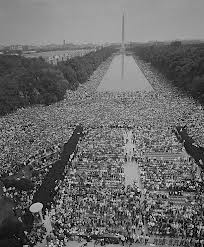 Kahn,
Horowitz, and Rustin were together again in 1963, helping to organize
the March on Washington where King delivered his famous “I have a dream”
speech. The march itself had been the brainchild of Rustin and another
prominent dissident, A. Philip Randolph, who years earlier had been the
only black representative in the AFL-CIO after its 1955 merger. Randolph
and Rustin were bound together by their political ideology – moderate
democratic socialism, and the centerpiece of their demands was a federal
jobs program that guaranteed full employment to every American citizen.xvi
The two saw in the march an opportunity to integrate civil rights with
the battle for these economic rights, something that surely appealed to
Kahn and Horowitz. But moderate organizations, including the NAACP,
CORE, and the SCLC, were rather reluctant to cast their lot in with
socialist ambitions. In one instance, the SNCC, whose leader John Lewis
was slated to deliver a speech during the march, became overtly critical
of the SCLC – the ‘elder statesman’ of the movement was being viewed as
too moderate and supportive of the Kennedy administration. The Civil
Rights Act, they felt, was “too little, too late,” and the march was the
perfect chance to voice this belief.The moderates were horrified. “I
don’t understand why you SNCC people always have to be different,” NAACP
leader Roy Wilkins told Lewis. “You’re double-crossing the people who
gathered to support this bill.”xviii
Wilkins, along with UAW leader Walther Reuther and other leaders,
pressured Lewis into revising the speech he was slated to give that day.
Kahn,
Horowitz, and Rustin were together again in 1963, helping to organize
the March on Washington where King delivered his famous “I have a dream”
speech. The march itself had been the brainchild of Rustin and another
prominent dissident, A. Philip Randolph, who years earlier had been the
only black representative in the AFL-CIO after its 1955 merger. Randolph
and Rustin were bound together by their political ideology – moderate
democratic socialism, and the centerpiece of their demands was a federal
jobs program that guaranteed full employment to every American citizen.xvi
The two saw in the march an opportunity to integrate civil rights with
the battle for these economic rights, something that surely appealed to
Kahn and Horowitz. But moderate organizations, including the NAACP,
CORE, and the SCLC, were rather reluctant to cast their lot in with
socialist ambitions. In one instance, the SNCC, whose leader John Lewis
was slated to deliver a speech during the march, became overtly critical
of the SCLC – the ‘elder statesman’ of the movement was being viewed as
too moderate and supportive of the Kennedy administration. The Civil
Rights Act, they felt, was “too little, too late,” and the march was the
perfect chance to voice this belief.The moderates were horrified. “I
don’t understand why you SNCC people always have to be different,” NAACP
leader Roy Wilkins told Lewis. “You’re double-crossing the people who
gathered to support this bill.”xviii
Wilkins, along with UAW leader Walther Reuther and other leaders,
pressured Lewis into revising the speech he was slated to give that day.Subsequent records have Kahn appearing frequently appearing in the background of these events, helping to edit or write the speeches that would define the movement. He had been known not only for his organizing abilities, but for the passion that he poured onto paper with his pen. He soon became both Rustin and Randolph’s personal ghostwriters; according to Horowitz he actually had a hand in writing or rewriting many of the speeches the day of the march.xix His abilities played a significant role in generating support from the AFL-CIO for Civil Rights – Randolph’s speech at the AFL-CIO’s 1963 annual convention, ghostwritten by Kahn, had even moved the normally stone-hearted George Meany.xx Later that year Rustin was approached by Norman Podhoretz, a later neoconservative figurehead, to write an article for the magazine of which he was chief editor, Commentary. Commentary, the organ of the American Jewish Committee, had proven itself to be an intellectual powerhouse in the 1960s by publishing articles by individuals ranging from the philosopher Hannah Arendt to Irving Kristol. Its editorial board was also close to the nexus of the Socialist Party of America through public intellectuals such as Sidney Hook. Rustin agreed, and with Kahn ghostwriting, the magazine soon put forth an article that would later be described as the “seminal piece for the civil rights movement.”xxi
These events served to finally commit the large combines of organized labor to throw their weight behind the push for racial equality. To solidify these ties the AFL-CIO provided Rustin and Randoloh with $25,000 to form the A. Philip Randolph Institute.xxii Norman Hill, an activist that had known Bayard from their days in the CORE together and had worked on the March on Washington, assisted in establishing the Institute and would eventually become its longtime president. The Institute served not only to further the causes of Civil Rights and worker’s rights, but championed support for the state of Israel (it later financed a full page ad in the New York Times titled “An Appeal by Black Americans for United States support of Israel,” which proved divisive in the more militant and pro-third world sectors of the African American population)xxiii and acted as platform for Rustin and Randolph’s democratic socialism. The Institute proposed a “Freedom Budget,” a “proposal for a massive, systematic attack on all the causes of poverty… call[ing] on the Federal Government to spend $185 billion over a ten year period in housing, education, guaranteed annual income, expanded medical care and social insurance, and most important, in creation of jobs to eliminate unemployment…”xxiv The name for this proposal, which never managed to catch on in policy-making circles, was suggested to Rustin by none other than Shachtman.xxv
Joining forces with the AFL-CIO marked a period of transformation in Kahn. Even amongst the moderate left, the union federation had been often viewed as a sort of reactionary body; even though their viewpoints were often complimentary, the Cold War mentality of George Meany had seemed reactionary amongst the SPA membership and the Shachtmanites. But Kahn was starting to reconsider things. In a letter to Rachelle Horowitz he had written “‘I can’t quite seem to drive out the negative that characterizes my world view these days. Everything points me more and more into an alliance with George Meany against intellectuals and radical moralists.”xxvi He had already staunchly rejected the ethos of the SDS, as Horowitz notes:
He also refused to be cowed by the attractive sound of ‘participatory democracy,’ the slogan most often used by SDS to rally students and fend off divisiveness in its own ranks…he wrote, ‘Decision by consensus, borrowed from the Quakers, helps to prevent the expert abuse of parliamentary procedure, but it also discourages the crystallization of opposing viewpoints, seeking the gentle obliteration of differences.’… He did not see participatory democracy as a viable or more democratic alternative to representative democracy, as many in SDS did.xxvii
Becoming Establishment
In 1963 the League for Industrial Democracy was bordering on collapse. SDS had formally split from the organization, and dismayed at the encroaching Shachtmanites, Neier left to join the American Civil Liberties Union (ACLU), which had been formed shortly before by another LID veteran, Roger Baldwin.xxviii In 1964, however, the organization would undergo a resurrection as Kahn and Harrington assumed control of it, bringing it into full partnership with the Socialist Party of America. The LID had already been close to the AFL-CIO, thanks to the efforts of Neier (ironically, he had used money donated from the union to hire Tom Hayden),xxix but the two became practically joined at the hip under the direction of their new leadership. They brought into the fold Jack Conway, of the AFL-CIO’s Industrial Union Department, Lane Kirkland, and Albert Shanker, a veteran member of CORE and head of the United Federation of Teachers.xxx While Neier refrains from identifying these individuals by name in his memoirs, he dutifully notes that they were “loyal Shachtmanites.”xxxi Harrington, however, was certainly not, and he envisioned the new LID as something far different from what it would become: “The sixties… were going to be a time of renewed reform, the first such period since the New Deal. In that perspective, the LID was supposed to become a center for discussion and debate where trade unionists, blacks and intellectuals could meet and analyze events and programs.”xxxii In addition to the AFL-CIO principles, the organization became staffed with the editors of Dissent magazine, as well as Rustin and Norman Hill.xxxiii
Throughout the 1960s, the reformed LID remained generally quiet about foreign policy recommendations, choosing to instead focus on Rustin’s Freedom Budget. The interlocking channels worked in tandem to push the idea: after the A. Philip Randolph Institute published The Freedom Budget, it was further distributed by the LID, and before long, the AFL-CIO published an edition tailored to the labor movement.xxxiv As appealing as the idea was in many corners, it would never come to fruition. Poverty alleviation programs had already become a staple of public policy after Harrington’s The Other America was consumed by the Kennedy and Johnson administrations, and the Ford Foundation was busy at work promoting community development corporations. Despite the fact that the Freedom Budget was more in the line of thinking of Keynes (who ideas were undergoing a major resuscitation) than Marx, Washington was unwilling to indulge in a major structural shift in the nature of both the American governmental and economic systems.
Dismayed at the apparent inability to create widespread change from below, Kahn began to shift his focus away from grassroots organizing the political arena itself. He attacked the SDS and other icons of the New Left in Commentary, writing that their dismissive attitude towards organized labor, rooted in the working classes integration into the dominant power structure, “contain[ed] strands of middle class prejudice.”xxxv He was further horrified as contingencies, such as the Weather Underground, broke away from the SDS and formed into militant terrorist organizations. Things seemed to be falling to pieces on all fronts: Vietnam was escalating, peaceful protests were falling away to violence and rioting, bombings and shootings peppered the urban landscape, and assassinations of important figureheads of change were looming on the horizon. The prospects of a revolution of any kind were, indeed, looking grim.
With the death of Robert Kennedy, Hubert Humphrey became the presidential frontrunner for the Democratic Party. He had already solicited the support of the labor movement, and the more dovish union leaders, such as Walter Reuther of the UAW, saw in the candidate an opportunity to end the war. Humphrey had been an advocate for intervention in Vietnam, but Reuther reasoned that he would not risk the labor vote over continued troop escalation. He solicited Kahn to write a speech for the candidate that would create an alliance between him and the anti-war movement.xxxvi The proposed policy shift would put Humphrey in support of a halt in bombing campaigns to allow peace talks to occur. The bid proved to be unsuccessful – when Johnson came out in opposition of this idea, Humphrey refused to break party ranks and chose not to endorse it.xxxvii
Kahn himself followed in the footsteps of his mentor Shachtman and had become rather ambivalent towards the war. Humphrey’s maneuvers had fractured his left-wing support, but in 1969 Kahn found it worthwhile to award him with the LID’s Man of the Year Award. This turn of events caused an uproar and must have been quite a scene – as the former speechwriting icon of the Civil Rights movement attempted to deliver the award, anti-war demonstrators war stormed the ballroom. Kahn, however, had already taken measures against such events. As Humphrey rose to the podium to deliver his acceptance speech, members of the Seafarers International Union escorted the protestors from the ballroom.xxxviii The debacle caused problems for Kahn and sent reverberations through the LID and the Left at large. Harrington protested the award dinner, and members of the Dissent editorial board demanded a split from the LID.xxxix The magazine’s primary editor, Irving Howe, managed to prevent the division, but wrote a letter distancing the publication and its board from the ceremony.
Kahn would continue his movement into politics in 1972 when he became a speechwriter for Senator Henry Jackson’s “Jackson for President” committee. The hawkish politician had already won the support of Shachtman, and with the transition of Kahn into his camp, the floodgates were opened for the so-called radical left to begin to openly support the continued militarization of US foreign policy. Jackson was a Democrat in the New Deal mold; he was staunchly pro-labor and despite being from the Pacific Northwest, he had won the support of the Southern conservative factions of the elite. As stated earlier, the nucleus that had formed around Jackson would later be regarded by many as the birthplace of the neoconservative movement. The roster of his senatorial staff and aids reads like a roll call of those who would later become big players in Washington in the Bush era: there was Paul Wolfowitz, Richard Perle, Elliot Abrams, Doug Feith, and Frank Gaffney.xl
Jackson himself was deeply entrenched in the corridors that linked big money to politics – after all, his nickname, “the senator from Boeing,” was derived from his cozy relationship with the defense contractor back in his days on the Senate Armed Forces Committee.xli Jackson had also been a reoccurring attendee to the little known National Military-Industrial Conferences, launched in 1955 by a partnership between the hard-right American Security Council (ASC) and two organizations that Dumhoff would later identify as being centers for the ‘isolationist’ divisions of the power elite – the Chamber of Commerce and the National Association of Manufacturers.xlii These series of conferences sought to bring together and help network participants from the National Security Council and the Pentagon with representative from corporations such as United Fruit, the Rockefeller’s Standard Oil, Honeywell, and Sears Roebuck.xliii Jackson’s warhawk approach to foreign policy placed him firmly in a very distinctive circle of policy-makers and intellectuals – one of his primary influences had been Reinhold Niebuhr, the two sharing the view “that any scheme of provisional injustice in international relations depended on American power willingness to use it.”xliv The ideological relationship between the two was furthered by Jackson’s selection of Dorothy Fosdick, who had been one of Niebuhr’s State Department protégés and a member of the Rockefeller Foundation’s 1954 conference on international relations theory with the theologian, as his closest aid. The pairing was described as a “perfect match” – Fosdick’s “major contribution to Jackson’s career lay in broadening, deepening, and refining his political sensibilities.”xlv She remained his chief foreign policy adviser for twenty-eight years.
It was a strange sight – the former left-wing icon had transformed from his position behind the scenes of the most important events of the Civil Rights movement to writing speeches for a man whom Eisenhower might as well have invented to the term “military-industrial complex.” It was also a testament to how far divided the Left had become since the divisive fracture at Port Huron: on one side was a nearly-full integration into Establishment, and on the other were the people who were wondering, just as Marcuse had in the opening pages of One Dimensional Man, why “we submit to the peaceful production of the means of destruction, to the perfection of waste, to being educated for a defense that deform the defenders and that which they defend.”xlvi
By the end of the sixties, however, the interplays between the elites, represented by the philanthropic endeavors of foundations, and the grassroots movements had been intensifying. King was beginning to adopt the mindset of his more radical colleagues; with increasing frequency he began to tackle the wider issues of the Vietnam War and income inequality. In his speeches he began to castigate America’s crony-dominated system as “socialism for the rich, private enterprise for the poor” – a phrase he had lifted from the pages of Harrington’s The Other America.xlvii In 1967 he told his SCLC that “evils of capitalisms are as real as the evils of militarism and the evils of racism.”xlviii In a similar manner the SNCC was moving further and further to the left, working closely with the burgeoning Black Panthers Party. They eventually became so intertwined that their ideologies, rhetoric, and personnel often blended together. As former SNCC leader James Foreman recounts, the SNCC’s New York division worked closely in helping set up the Black Panther chapter in the city, with the SNCC’s international affairs offices serving as the Black Panther’s initial headquarters.xlix
Things progressed for the worse in 1968, following the assassinations of King and Robert Kennedy Jr. The legions that had so passionately clung to their dog-eared copies of books by Mills and the Frankfurt School were in tatters. Many, such as former Marcuse student Naomi Jeffe had disappeared underground in the violent Weather Underground faction.l Faced with the upsurge of militancy from below, the elites followed suit, utilizing multifaceted tactics to undermine the resistance. Stockley Carmichael, who had become the SNCC chairman in 1966, became the target of a covert FBI campaign (known as “COINTELPRO”) to disrupt the movement. Later documentation revealed that in 1968 the organization planned to leak information that Carmichael was “a CIA informer… It is also suggested that we inform a certain percentages of reliable criminal and racial informants that ‘we have heard from reliable sources that CARMICHAEL is a CIA agent.” It is hoped that these informants would spread rumors in various large Negro communities across the land.”li
The foundations continued to do their job as well. In 1967 McGeorge Bundy, recently graduated from the State Department, had navigated the Ford Foundation into Civil Rights territory by providing massive grants to CORE. The actions of the former Cold Warrior were attacked by many upper-class white members in the establishment. Regardless, Bundy insisted that “full equality for all American Negroes is now the most urgent domestic concern of the country.”lii In keeping with the modus operandi of moneyed philanthropies, Bundy’s commitment to racial equality occurred in a way that would ultimately be beneficial for capitalist interests. The Ford Foundation poured huge sums into community development corporations as a part of Bundy’s plan.liii Funding CORE also seemed to dovetail this pursuit. According to James Foreman, “McGeorge Bundy… called a meeting at the Ford Foundation in New York City of twenty or more Black leaders… Bundy announced to the assembled Black leaders that a decision had been made to destroy the Student Nonviolent Coordinating Committee and to save the Congress of Racial Equality (CORE). This decision was based on an assessment that it was possible to wean CORE away from the concept of Black Power through massive infusion of money for its operation.”livThe popular commentator Earl Ofari Hutchinson readily agrees with this perspective, writing that “CORE, under the direction of Roy Innis, was one of the first organizations to back the plan of President Nixon for black capitalism.”
This redirection in funding not only undercut the radical SNCC, but also impacted the status of the SCLC. Foundation funding of the organization sharply declined, officially opening up a void for CORE and the NAACP to fill. King’s legacy itself was selected for a sanitizing process: almost immediately after his death the Martin Luther King Jr. Center for Nonviolent Social Change was established in Atlanta, drawing its funding from philanthropic foundations, and corporations such as General Motors, U.S. Steel, Amoco, and Union Pacific. The Ford Motor Company put up $1 million for the center’s initial establishment. A little over a decade later the Center would be dolling out capital-friendly advice to activists and interested persons, something that clashed directly with the stance that King had taken towards the end of his life. One example of such an operation as an annual lecture series at the University of Georgia that the Center sponsored titled “The Free Enterprise System: An Agent for Nonviolent Change.”lv
As the decade drew to a close, the optimism and rebellious nature of the change movements had diminished. The two assassinations had knocked the wind out the sails of many participants, and the schisms between the SDS at large and the Weather Underground rendered many disenfranchised with the Left. The ugly side of the counterculture was revealed by the infamous murder at a Rolling Stones concert in Altamout and the bloody crimes committed by the Manson family, while overseas the revolutionary spirit that had paralyzed France, Germany, and beyond had long since faded away, relegated to small underground groups that operated in an often violent manner. Foundations continued their crusade against radicalism – in one notable instance the Ford Foundation had dismantled a SDS-backed student revolt at Columbia University – where student-strikers had seized control of the campus – by providing $40,000 to a moderate faction called the Students for a Restructured University, which promptly negotiated a compromise with the Columbia administration.lvi These events were further elaborated on a first-hand account of the student occupation by SDS member James Kunen titled The Strawberry Statement, hinting a further-reaching agenda in the Establishment. In it he recounts that men from the Business International Corporation (a known CIA front company),lvii as well as Rockefeller interests, were attempting to “buy up a few radicals,” hoping to stir up “a lot of radical commotion so they can look more in the center as they move to the left.”lviii Importantly, Kunen identifies these individuals as the “left-wing of the ruling class” and the “boys who wrote the Alliance for Progress.”lix But with the advent of Nixon’s ascendant to power and the promise of expansion in Vietnam, the moderate liberal’s plan didn’t seem to be working, and it wouldn’t be until the election of Jimmy Carter that they would occupy the White House. As for the grassroots level, spaces were opening up in what had previously been a tapestry of solidarity and interaction, and now the Shachtmanite sphere was winning out.
i Joan Roelofs Foundations and Public Policy: The Mask of Pluralism State University of New York Press, 2003, pg. 43
ii Herbert Marcuse One Dimensional Man: Studies in the Ideology of Advanced Industrial Society Beacon Press, 1964, acknowledgements
iii Ibid, pg. 38
iv Gerd-Rainer Horn The Spirit of ’68: Rebellion in Western Europe and North America 1956-1976 Oxford University Press, 2007, pg. 147
v ed. Andrew Feenberg The Essential Marcuse: Selected Writings Beacon Press Books, 2007, pg. xxx
vi Aryeh Neier Taking Liberties: Four Decades in the Struggle for Rights Public Affairs, 2005 pg. xx
vii Ibid, pg. xxi
viii Max Shachtman, ‘Stalinism on the Decline: Tito versus Stalin: the Beginning of the End of the Russian Empire,’ New International, Vol.XIV No.6, August 1948, 172-178
ix James P. Cannon The Struggle for a Proletarian Party Resistance Books, 2001, pg. 9.; Maurice Isserman The Other America: The Life of Michael Harrington, Public Affairs, 2000, pg. 268
x Tom Kahn “Max Shachtman: His Ideas and His Movement” reprinted in Democratiya , No. 11, Winter, 2007
xi Ed Edwin interview with Bayard Rustin, September 12th, 1985, Columbia University Oral History Collection, http://historymatters.gmu.edu/d/6909
xii Rachelle Horowitz “Tom Kahn and the Fight for Democracy: A Political Portrait and Personal Recollection”Democratiya No. 11, Winter, 2007, http://www.dissentmagazine.org/democratiya/article_pdfs/d11Horowitz.pdf
xiii Ibid
xiv Clayborne Carson In the Struggle: SNCC and the Black Awakening in the 1960s Harvard University Press, 1995 pg. 163
xv Ibid, pg. 270
xvi Jerald E. Podair Bayard Rustin: American Dreamer Rowman and Littlefield Publishers, 2008 pg. 50
xvii Kimberle Crenshaw, Neil Gotanda, Garry Peller and Kendall Thomas Critical race theory: the Key Writings that Formed the Movement The New Press1996 pg. 154
xviii Charles Euchner Nobody Turn me Around: A People’s History of the 1963 March on Washington Beacon Press, 2011 pg. 151
xix Horowitz “Tom Kahn and the Fight for Democracy”
xx Ibid
xxi Ibid
xxii “A. Philip Randolph is Dead” Associated Press
xxiii Jervis Anderson A. Philip Randolph: A Biographical Portrait University of California Press, 1986pg. 345
xxiv “The Freedom Budget” The Harvard Crimson, November 17th, 1967 http://www.thecrimson.com/article/1967/11/17/the-freedom-budget-to-the-editors/
xxv “A meeting for Max”, New America vol. 11 no. 1, December 31st, 1972
xxvi Horowitz “Tom Kahn and the Fight for Democracy”
xxvii Ibid
xxviii Neier Taking Liberties, pgs. xxiv, xxii
xxix Ibid, pg. xx
xxx Horowitz “Tom Kahn and the Fight for Democracy”
xxxi Neier, Taking Liberties pg. xxi
xxxii Horowitz “Tom Kahn and the Fight for Democracy”
xxxiii Ibid
xxxiv Ibid
xxxv Tom Kahn, “The Problem of the New Left” Commentary, July 1966
xxxvi Kevin Boyle The UAW and the Heyday of American Liberalism, 1945-1968 Cornell University Press, 1998pg. 249
xxxvii Ibid
xxxviii Horowitz “Tom Kahn and the Fight for Democracy”
xxxix Gerald Sorin Irving Howe: A Life of Passionate Dissent NYU Press, 2005 pg. 244
xl Janine R. Wedel Shadow Elite: How the World’s New Power Brokers Undermine Democracy, Government, and the Free Market Basic
Books, 2011, pg. 147-191; Peter Beinart “Interpreting the Jackson
Legacy in a 9/11 Landscape” Henry Jackson Society Lecture, September 17th, 2008
xli Richard S. Kirkendall “Two Senators and the Boeing Company: The Transformation of Washington’s Political Culture” Columbia Magazine Winter 1997-98: Vol. 11, No. 4, http://columbia.washingtonhistory.org/anthology/maturingstate/twoSenators.aspx
xlii Russ Bellant Old Nazis, the New Right, and the Republican Party: Domestic fascist networks and their effect on U.S. cold war politics South End Press, 1988, pgs. 33-35
xliii Ibid
xliv Henry Jackson: A Life in Politics, pg. 46-47
xlv Ibid, pgs. 84-85
xlvi Marcuse One Dimensional Man pg. xli
xlvii Michael Harrington The Other America: Poverty in the United States Scribner, 2007 pg. 170
xlviii Colin Barker, Alan Johnson and Michael Lavalette Leadership and Social Movements Manchester University Press, 2001 pg. 111
xlix James Foreman The Making of Black Revolutionaries University of Washington Press, 1997 pg. 531
l Becky Thompson A Promise and a Way of Life: white antiracist activism University of Minnesota Press, 2001, pg. 391
li Ward Churchill and Jim Vander Wall Agents of Repression: The FBI’s Secret Wars Against the Black Panther Party and the American Indian Movement South End Press, 2001, pg. 49
lii Tamar Jacoby “McGeorge Bundy: How the Establishment Man Tackled America’s Problem With Race” Alicia Patterson Foundation, http://aliciapatterson.org/stories/mcgeorge-bundy-how-establishments-man-tackled-americas-problem-race
liii Ibid
liv Forman The Making of Black Revolutionaries pg.xvi.
lv Joan Roelofs Foundations and Public Policy: The Mask of Pluralism State University of New York Press, 2004, pg. 132-133
lvi K.R. Bolton “Socialism, Revolution, and Capitalist Dialectics” Foreign Policy Journal May 4th, 2010 http://www.foreignpolicyjournal.com/2010/05/04/socialism-revolution-and-capitalist-dialectics/0/
lvii “CIA Established Many Links To Journalists in US and Abroad” The New York Times December 27th, 1977
lviii James Kunen The Strawberry Statement: Notes of a College Revolutionary Avon, 1970, pgs. 130-131
lix Ibid
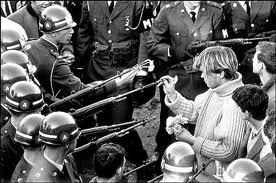
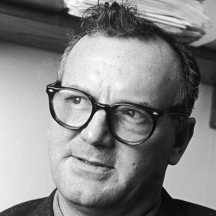
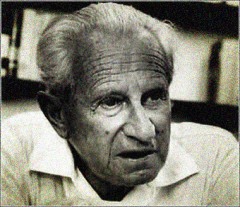
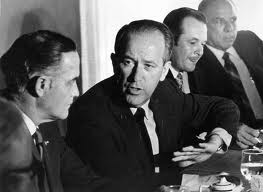
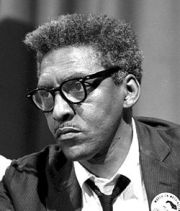



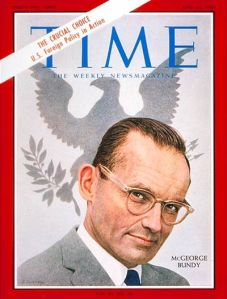
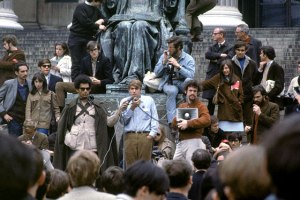
No comments:
Post a Comment